This was published 6 years ago
Holidays by the sea: Experts explain why we need to be by the water when we travel
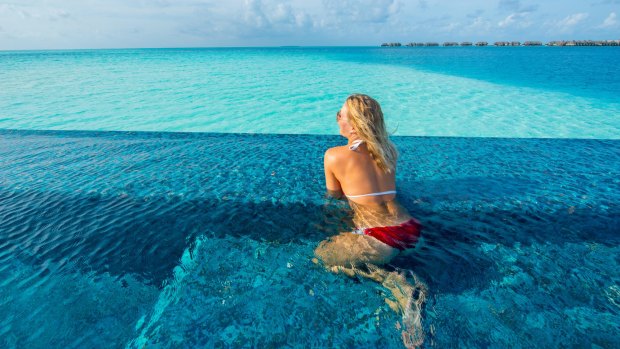
An infinity pool at the Conrad Hilton Resort, Rangali Island, Maldives.Credit: Alamy
Finding the perfect wave. Sampling the sea's bounty. Experiencing the dynamism of the Earth's hot springs. Witnessing the potency of monsoon rains. Exploring the life aquatic. Our passion for water is an impetus to travel and a powerful influence on our collective psyche. The magnetism of this essential compound is obvious from the outset. We float in gestation for nine months, we slip into the world in a wash of liquid and we require it for life.
Indeed, it's the stuff of potent memories formed early – a beach shack, a river, a lake, a swimming pool, the redolent stench of chlorine. What's more, 70 per cent of the Earth's surface is flooded, and human bodies are briny to the core – about 60 per cent water. Perhaps even subconsciously, we seek those travel experiences that evoke remembered sensory delight. How a taste takes us to a place. How we associate water or rain sounds with the complex emotion of belonging. The way the pure feel of water, rock and shade trees summons a visceral connection with landscape. The mind-blowing relationship with sea creatures. The atavistic delight of basking in the Earth's miraculous heated water.
How the memory of those first waves brings back not just delight but also recollections of the people who mattered then. How crossing oceans is a simple metaphor for life's journey. These imprinted memories forever drive us to crave that early water happiness and we yearn for the comfort of water – its multicoloured moods and its affirmation of our place in the world. We're drawn not simply to mighty rivers, lakes, waterfalls, bays and archipelagos but also to puddles and inlets, streams, pools and deluges – whatever nourishes our memories. Water is both our master and our plaything.
It's such a powerful force that Western literature was launched upon the water – The Odyssey and Iliad, Moby Dick, The Old Man and the Sea, even Huckleberry Finn, who rafted down the Mississippi.
Today, in the midst of summer holidays, our writers celebrate in different, and unexpected, ways the essential role water plays in our travels and leisure time. In all respects, and by whichever means, we just can't wait to get wet, wet, wet.
RAIN: CONSIDER THE POUR
By Brian Johnston
I've loved rain since my first encounter with a tropical downpour in Malaysia when I was in my 20s. I grew up with soft grey European skies and polite showers. In the tropics – much to my early and ongoing exhilaration – the sky splits open in barrages of thunder and empties sheets of rain.
The water hammers down, carpet-bombing streets as people run helter-skelter for cover. And then it stops – just like that – with a suddenness that makes you believe in a capricious god. The world is washed and fresh, colours more intense, footpaths steam-cleaned. Geckos wiggle and flowers bloom. Rain can be one of the world's great spectacles.
Most travellers don't like rain, probably a reaction learned in childhood, when it restricted us to indoor tedium. It doesn't fit the increasingly organised, curated world of travel that promises perfection. But I think rain reminds us that we aren't in control, that the stereotypes of cafe tables and sunny beaches are no more the travel norm than soggy squares and rain-lashed coastlines.
These rainy alternatives have their own beauty: slick cobblestones and marble, water-wobbled neon, Rome turned into a black-and-white Fellini movie. Besides, without rain there would be no orchids or orang-utans or Oregon coast, or any number of things we travel to admire. Without rain the primordial and rather haunting Haida Gwaii Islands off Canada's west coast wouldn't be half as beautiful, with their dripping temperate rainforests, mossy glow and soggy-fur bears.
Without rain, there'd be no atmosphere in the damp Welsh landscapes captured by Turner. You can still see the blotches of rain on his watercolours in Cardiff's museum, and the lines where he folded his paper up before hurrying for shelter.
There are places you'd rather be in the rain than in sunshine, like bed or a tearoom, with raindrops tapping on windowpanes, smudging the view beyond into a Picasso abstract. But really, you ought to head outside and get wet. A rainy day is a dismal day if you remain huddled in your tent or hesitant in your hotel room.
Why do those "what to do when it rains" travel lists constantly just point you to shopping malls and museums? They should tell you to splash through park puddles, turn your face to the sky and feel the rain plop on your cheeks, marvel at the monsoon.
You see things on a rainy day you mightn't see otherwise: a slither of worms, a sparkle of spider webs, banana leaves polished to a high sheen, pockmarks on a lake. The world smells different, too. There's a ferrous before-rain smell that promises life. And an after-rain smell of damp and drains and steaming plum-pudding soil that just makes you sniff and smile.
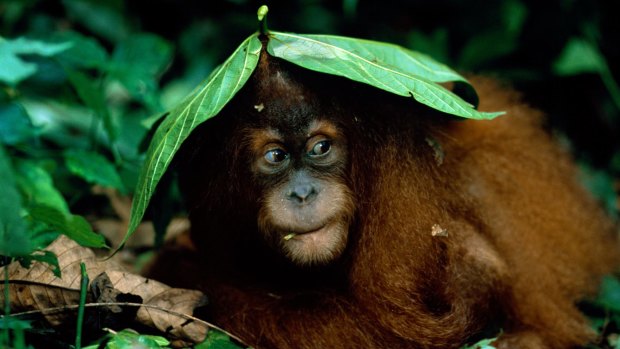
Credit: Alamy
HOT SPRINGS: THERMAL LET US REJOICE
By Katrina Lobley
In a remote corner of Australia, geology and geography have combined to create what's surely the world's most beautiful hot spring. Zebedee Springs is tucked into the 400,000 hectares of El Questro Wilderness Park, 110 kilometres from Kununurra in the east Kimberley. Rare Livistona palms sprout straight from pools of clear, warm water.
You can loll against their fine, tight-knit root systems, as soft and comforting as a lover's shoulder, or find a submerged rock seat from which to admire this oasis framed with thickets of pandanus. Peer through all the greenery and you can make out rugged cliffs that glow red at sunset.
Only a few people are ever here at that time of day, though. In the afternoon, you can have this extraordinary place all to yourself – if you happen to be staying at The Homestead, the park's top-tier accommodation. Otherwise, any El Questro visitor can wallow in these waters in the morning.
There's nothing like sharing a natural hot spring. Not long after my Kimberley experience, I find myself heading to Huka Lodge near Lake Taupo in New Zealand. "There's a hot spot in the river near there," a friend says. And so I gather my travelling companions for an excursion to Spa Park where indeed the Otumuheke Stream tumbles from a river bank, creating a waterfall that you lean back against for a shoulder and back massage, courtesy of nature. To cool down, you sit in the shallows of the Waikato River where hot and cold mix to a perfect temperature.
One of my companions forgets her swimmers; her brief briefs prompt the odd double-take. She would, of course, be considered over-dressed in the hot springs of Japan where etiquette dictates that you bathe naked. Hot springs – or onsen – can be found all over Japan but one of the most charming places to enjoy them is Kinosaki Onsen, under three hours from Kyoto by train.
The town is home to seven public onsen and it's quite the thing to dress in traditional garb – a yukata (light cotton robe), sash, overcoat (in winter), socks and geta (varnished wooden sandals) – to clip-clop to and from the bath houses. I set myself a challenge: can I experience them all over two days? I do – but it takes some planning as each one closes one day of the week and three don't open in the mornings.
At the first onsen I feel shy, wishing for more steam so that I could slide unseen into the almost scalding water. By onsen number three I feel like a local, strutting from the showers to the indoor and outdoor pools. And in the weightlessness of the warm water and the silent bonding with strangers, I forget there's even a world outside these walls.
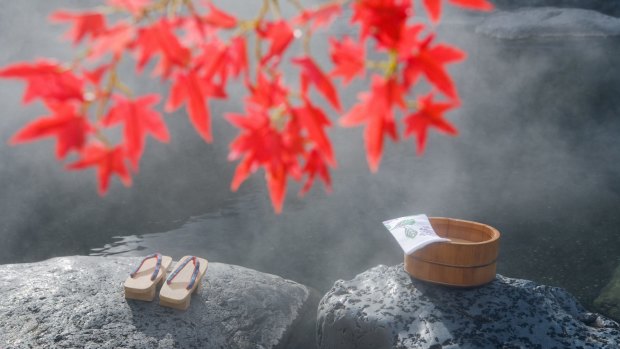
Credit: Alamy
THE HOTEL POOL: FROM HERE TO INFINITY
By Julietta Jameson
From helping hangover to heatstroke, stopover decompression to stress relief, many a hotel swimming pool has saved my life. I'm not the first to know of the therapeutic quality of a large, man-made, communal place to bathe. The ancient Romans, Greeks and Indians were all over it.
But it wasn't until the 1930s that hotels introduced them. Florida's "Riviera resort", The Biltmore was perhaps the first. Its pool wasn't for therapy, though. It was, in the most part, for marketing; the enormous square the stage for aquatic spectaculars. Synchronised swimming and alligator wrestling were just some of the novelties to which thousands flocked. And it was the backdrop for society snaps of the rich, royal and famous who also congregated around its glamorous edges.
Today's pools can be just as sceney and show-stopping (minus alligators) or they can be humble little things at country motels. Does it really matter what size or shape it is, when, after a long day's driving, or an arduous flight, or pounding the pavement on a shopping spree, or a hectic session of skiing, your body is screaming, "Get me to the pool"?
In my experience, it matters not a jot. Whether it's the cool rush on an overheated noggin as you submerge for the first time, or the club sandwich and cold beer on a lounger after, or the liquid instant relaxation of a heated indoor pool, there's a solace here that says, "Stop, breathe, enjoy."
My favourite pools include a kidney-shaped vintage beauty with a lassoing cowboy fashioned in the tiles at the Hacienda del Sol in Arizona; the big square play pen with islands to swim around at the Crowne Plaza Changi Airport, Singapore; the crazy-paved lagoon at the Surfers Paradise Marriott and too many infinity-edged stunners to mention.
But they also include a tiny oblong on the roof of a three-star in Buenos Aires. The days were so hot. The pool was so cool. That is all that needs to be said about it. In fact, the only factor that can spoil a hotel pool for me, is people. The delighted squeals of children are part of the soundtrack to pool life. The screeches of the uncontrolled are not.
Men throwing footballs to one another above the heads of fellow bathers, and the guy (sorry, it's always a guy) who decides to do super-fast laps during the afternoon chill-out time are the epitome of the me-first mentality that is wrecking everything for everyone these days. (The early mornings, or late evenings, when few are around, are for laps, dude.) And, oh, the loud mobile phone conversation. I'm pointing at you, boorish businessman during a Bangkok five-star stay.
But even with these annoyances, you'll still find me packing my swimsuit last for easy access when I arrive somewhere. And I'll always have a waterproof bag handy in which to put wet bathers when I leave – because I'll always squeeze in just one more swim before checkout.

Credit: Alamy
SWIMMING HOLES: THE FISSURE QUEEN
By Nina Karnikowski
There's a moment, right after you've scrambled out of the bracing waters of a natural swimming hole, when the smugness sets in.
Palms streaked with dirt, bottom sliding along the mossy rock you've just perched on, you know you're as close to nature as you're ever likely to get. With not a soul around and as near nude as you could ever be outside your own home, you're connecting with the landscape in a way that's impossible in a chlorinated pool, or at a beach crammed with sunburnt, sand-flicking tourists.
Swimming holes are nature's hidey-holes. Usually surrounded by rocky escarpments or groves of trees, they are places of escape. Peaceful nooks where you can wash your worries away far from the madding crowd, then laze in the shady quiet for as long as it takes for your mind to catch up with your now-tranquil body. This peace, however, is a reward that must be worked for, given the remote location of most swimming holes. In northern Israel's Golan Heights, it took an hour of hiking in 35-degree heat to reach the secluded Hexagon Pool. But leaping into those crisp waters, encircled by hundreds of hexagonal basalt columns formed by lava flows millenniums ago, made the schlep worth it.
These adventurous, Huckleberry Finn-feels are what swimming hole devotees crave. After kayaking through the jungle in Vanuatu to reach a deep natural spring, my husband and I were transported back to our childhoods. We spent hours climbing the surrounding banyan trees, telling tales and bombing into the milky blue waters of our own private playground.
As a kid, I spent summers exploring the swimming holes of the NSW Barrington Tops National Park, bare-chested, wild-haired and free. When I returned last summer, I found them just as delightful as I remembered them, and my husband and I spent an unforgettable afternoon lounging on rocks submerged in the water, sipping champagne from enamel mugs as fish nibbled our toes.
Unmanned and unpredictable, lovers of swimming holes are nothing if not lovers of the unknown. Which is why my favourite swimming hole of all can be found in a fairytale NSW spot called Promised Land. There, by the Never Never River, you'll find the rope swing of childhood dreams. You can use it to throw yourself into the crisp waters, what lies beneath the surface a complete mystery, in the perfect summer baptism.
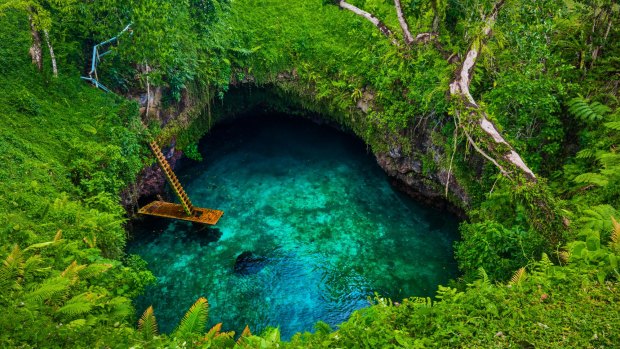
To Sua is a famous swimming hole on Upolu island, Samoa.Credit: Alamy
THE OCEAN: SEAS, THE MOMENTS
By Alison Stewart
"I must go down to the seas again, to the lonely sea and the sky, And all I ask is a tall ship and a star to steer her by," wrote John Masefield in his poem, Sea Fever. Masefield's poem expresses a longing for the ocean and its connection with freedom and adventure.
We Australians at the bottom of the Earth are used to metaphorically "going down to the seas again" to negotiate the great bodies of water we associate with spiritual journey, inspiration and renewal. Every morning I wake to a joyous framed photo of my once tiny daughter leaping gleefully in the shallows at our favourite Mid North Coast NSW family summer haunt at South West Rocks, her hair fanned halo-like around her head. It's such a happy, innocent photo.
Youthful memories are formed by the edge of the ocean. Its mysterious sounds inhabit our early years and soothe us when troubled, its capriciousness a delicious challenge. We experience the sea in different ways according to our life phases. Childhood is about those special family times on the ocean – learning to swim both a pleasure and a terror. We paddle at its edges, discovering what it throws up in rock pools and beach jetsam – jellyfish, kelp, bluebottles, and shells.
Part of its appeal is in its scent of danger – the rips, murkiness, denizens and its untamable size. Yet it's the stuff of sublime holidays as writer Alison Lester explores in her evocative picture book, Magic Beach: "At our beach, at our magic beach, we swim in the sparkling sea, surfing and splashing and jumping the waves, shrieking and laughing with glee." She drew on the little Victorian beach of Walkerville for her story.
For me, growing up first in KwaZulu-Natal, then Cape Town, it was holidays at the coastal beaches of Amanzimtoti and Umkomaas, then the Cape's Atlantic Ocean where the icy, steaming water betrayed the magnificence of Clifton, Llandudno and Camps Bay beaches. And then as a parent in Australia, those idyllic family holidays, our children, like us, forever drawn to the ocean.
In early adulthood, desire inhabits the sandy slices that fringe oceans – the intoxicating trilogy of sun, sand, and eternal water. The beaches of French Polynesia, Hawaii, the Bahamas, Portofino, Mallorca, the French Riviera, Mykonos, Copacabana, Bondi, are iconic places of yearning. And the oceans we cross to get there represent the excitement of journeying and discovery.
And it's no co-incidence that we are swept into retirement on the bows of ocean-going cruises that distil the youthful attraction of far-flung places with comfort and safety, for if we can afford it, to live is to travel and there are miles (of ocean) to go before we sleep.
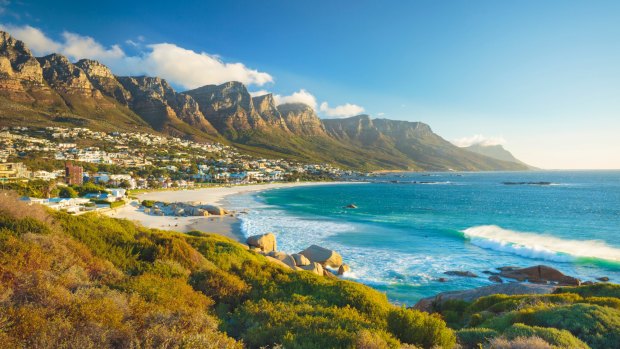
By Ben Groundwater
There was a moment of realisation for me, aboard a boat bobbing in the clear French Polynesian ocean. I could still taste the sea salt crusted on my lips; still feel the suction mark from the diver'smask imprinted on my face. I'd just been swimming in the natural gap of a coral atoll reef, sinking into the blue depths there, watching as huge schools of reef fish circled, as fat tuna and sleek mahi-mahi flashed by. Eventually I'd made my way back onto the boat, and Chris, my guide, had smiled. "Let's see if we can catch some lunch?"
"Great," I said. "Where's the best spot?"
He'd laughed. "Here. Didn't you see all the food?"
That was the moment. That was the connection. The food I enjoy comes from the place I love. They're inextricably linked. They're one and the same. It may seem obvious, this realisation, but so often fish just comes from a shop, or at best it's yanked anonymously from murky water. To actually see your food swimming around, and then to catch it straight after – that's a moment. It breeds respect. It makes you appreciate the simplicity of the sea, and the beauty of it.
I love the ocean, and I love its bounty. Give me a kilogram of prawns and I'll sit down and eat the lot. Give me a fresh snapper and I'll barbecue it and devour it. Give me Moreton Bay bugs, langoustines, oysters, crabs, clams … I'll eat them all.
Good seafood should take you back to that atoll in French Polynesia. It should take you to the place it came from. The perfect dish requires no fancy sauces; it needs no tricky techniques. It should still bear the brine of the ocean. It should be perfectly simple and fresh. By far my most memorable meals have been that way. I'm talking two plump red Carabineros prawns, grilled lightly over fire, sprinkled with sea salt, served plain and unadorned at Etxebarri, a restaurant in the Basque Country of Spain. I'm talking a single langoustine, boiled in salted water and served whole at Cervejaria Ramiro in Lisbon, Portugal.
I'm talking otoro sushi – sweet, fatty tuna belly – served at a bar in Tokyo; sea snails fried with chilli and lemongrass on the streets of Ho Chi Minh City; oysters popped off the rocks and shucked on a beach in PNG; lobster poached in butter in Nova Scotia, Canada; and mahi-mahi, grilled just an hour after it was caught in the French Polynesian sea.
These are the meals that connect you to the ocean: they take you back to long days spent on the beach, to boat trips with friends, to swims over tropical reef, to salt, to sway, to sunshine. Every time you feel that, it's a moment.
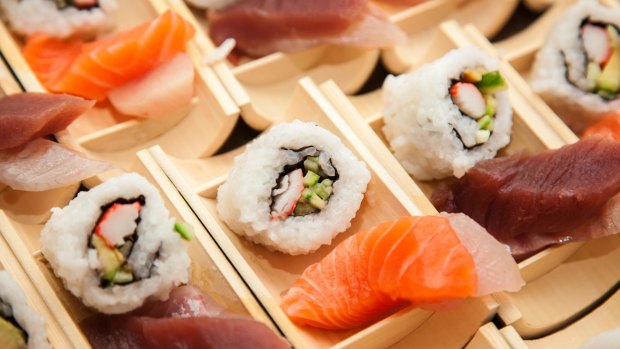
Credit: Alamy
By Ute Junker
The young fur seal was thrilled to see me. As I floated on the surface of the ocean gazing down at him, he put on quite a performance: flipping, spinning, somersaulting through the water. He dived down towards the ocean depths at thrilling speeds, then spiralled back up, skimming just under my stomach so quickly that, by the time I flinched, he was already gone.
Then he lolled back, looking at me expectantly as if to say, "Can you match that?" The answer to which, clearly, was, "Nope, not a chance."
Talk about wildlife holidays, and thoughts immediately turn to the plains of Africa and the rainforests of Borneo. Yet, addicted to safaris as I am, I have to admit that some of my most thrilling animal encounters have taken place in the water.
From that acrobatic fur seal in the Galapagos to a pair of friendly batfish that kept us company as we explored a coral reef in the Maldives, the oceans are the perfect playground for animal lovers.
You don't even need to don your scuba gear to experience a memorable encounter. Armed only with a mask – and sometimes fins – I have kept company with turtles casually cruising along, gone full tilt to keep pace with a pod of dolphins gaily leaping through the water, and floated motionless watching a humpback mother and her calf, just hanging out.
One of the most remarkable things about oceanic encounters is how curious the animals can be. Unlike land animals that are, understandably, wary of humans, marine creatures often lack that fear. Indeed, some are insatiably curious about the humans that stray into their domain. Mostly this is endearing, but it can also be vaguely hair-raising. Take the time my companion and I captured the interest of a young whale shark, which repeatedly came back to examine us more closely. There was nothing aggressive in its behaviour, but the sight of eight metres of fish heading straight at you tests your composure.
It is not all about size, of course. Even the smallest of ocean denizens are enchanting. Who can fail to be entranced by tiny tropical reef fish, whether they are fast-moving darts of colour that shoot across your field of vision or hove cautiously, like semi-buried treasure, within the protective folds of a piece of coral?
The best thing about underwater encounters is that, unlike safaris, they are usually free. Just grab that snorkel and plunge in; a memorable encounter may be waiting just under the waves.
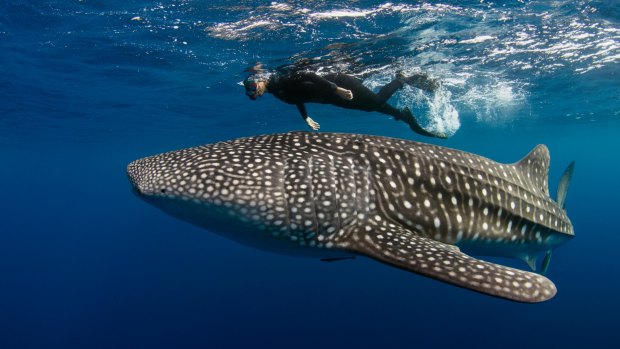
Credit: Alamy
THE SURF: FOAM AND FORTUNE
By Craig Tansley
Every surfer remembers their very first wave; it's what sucked us in, and hooked us for life. I caught my first one riding the nose of my uncle's longboard at The Pass in Byron Bay, NSW. I was five. There's not a lot I remember about 1979, but I can still hear him screaming at me to get to my feet as he stood behind me. Most of all, though, I remember the surge … the first time I felt the potential of the ocean to take me with it.
Uncle Ray chased waves around the world long before it became the fashion. He hitched rides on yachts across the Pacific. He'd go anywhere, and do anything, for his love of surfing. He rode his first wave in '61. He'll be 72 in March and probably won't miss a day of surfing in 2018; though these days he paddles on his knees to spare his back. Every surfer has their own version of my Uncle Ray, someone who instilled a love for the ocean that got deep inside them, enough to last their lifetime.
A surfer is the only ocean-goer who truly worships the water. A swimmer may spend 15 minutes in it. A diver, about 30. But surfers spend hours in the water, every surf. When I was growing up in Byron, I surfed three hours every morning of my weekends and holidays. I'd only go home for Weet-Bix. Then I'd surf another three. I surfed till pterygiums grew over my corneas, and exostoses formed in my ear canals.
But then, only a surfer understands that no surf is ever the same. No wave ever breaks the same way as the one before it. And the sense of anticipation we feel every time we wait for the next wave to come? Oh boy, it's that feeling that keeps us coming back for more. It's what sends us across the planet in tiny planes, and on decrepit sailing boats, because every surfer knows that next wave coming may well be the ride of their life.
Though no wave can be ridden on dry land. Surfing isn't simply about surfing, it's about being steeped in all that salt water, and warmed to the bone by sunshine, and surrounded by hinterland, and horizon. The British National Health Service found its patients showed a significant improvement in mood after surfing, and a study into US war veterans with post-traumatic stress disorder acknowledged even just a 30-minute surf was enough to significantly bolster their mental health.
On average, surfers spend less than 8 per cent of each surf actually surfing, while the average ride on any wave is a measly six seconds; and yet it's these moments that can define a life, and give it purpose. But we don't expect you to understand: after all, only a surfer knows the feeling.
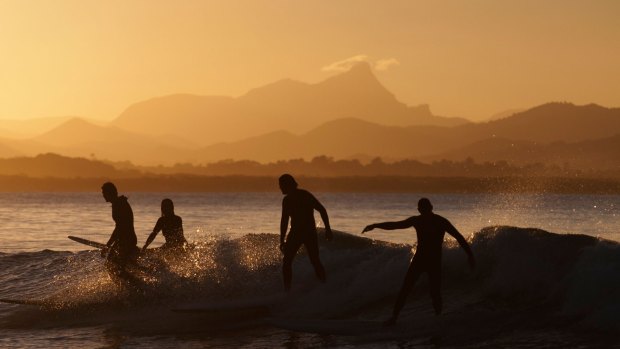
Credit: Alamy
Sign up for the Traveller newsletter
The latest travel news, tips and inspiration delivered to your inbox. Sign up now.